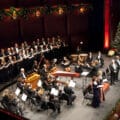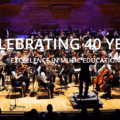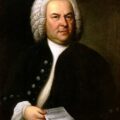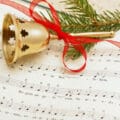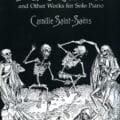Jun 14, 2016
A Visit To The Chorus School
Two years ago – almost to the day – I blogged about visiting the Newark Boys Chorus School in New Jersey. As a former choirboy, these visits are always special for me for the reasons stated in the 2014 post. However, yesterday’s encounter was particularly meaningful on several fronts.
First, a good friend and colleague, Dr. Brian Harlow, is just completing his first year as conductor of the Apprentice Chorus, that group of younger boys who in many cases are in their first year at the school, and are in training to become members of the prestigious Concert Chorus conducted by Donald Morris.
Brian is a superb musician and one of the finest organists I know. I had the opportunity to attend one of the Apprentice Chorus performances earlier this season and can vouch that he is doing wonderful things with these young singers. So when Brian carved out some time for me to do a listening session, I was delighted to accept.
A roasting hot room without air-conditioning added an extra dimension to the process. The music I selected was the Overture to Handel’s Music for the Royal Fireworks. After preliminary introductions, we listened to the Overture without explanation. The Overture is almost eight minutes – a long listen by 9, 10 and 11-year-old standards, and even long for some adults! (If you wish to enjoy the version they were listening to click here.)
From years of doing this with young students, that first listen went predictably. Some tapped the beat, and some conducted along or ‘air-played’ various instruments. By the end – and probably due to the heat – some heads were even down on desks.
Then we began to explore various facets of the music. We all loudly chanted the double-dotted rhythm that permeates the introduction, and because they are trained performers, I wrote the rhythm on the erasable music staff that is in the front of the room. We were able to discuss how this rhythm is constructed and why å_it works the way it does.
We looked at Handel’s use of silence – musical rests – and how composers use them in the same way we incorporate silence into speech for expressive purposes. They enjoyed being divided into two groups – the musical ‘question’ group and the musical ‘answer’ group – counting how many occurrences of this formal device they found, and noticing things like Handel’s switching out the bassoons and oboes for the French horns in the ‘answer.’
They especially liked Handel’s dynamic change to suddenly loud after a quiet moment. One student commented that he found it jarring every time we listened to it! (Good for Handel!) And all loved Handel’s effective surprise of seeming to end the piece, but instead going immediately on the ‘B Section.’
Finally, it was time to listen to the eight minutes – for the second time – true to standard Discovery Concert format, following the prepared listening guide as I wrote its corresponding numbers on the white board. The members of the Apprentice Chorus were transfixed. One could have ‘heard a pin drop.’ And when the Overture concluded they burst into applause – something that had not happened on first listening.
I asked: “By a show of hands, how many of you think the music sounded different the second time?” Every hand shot up. And I fired back immediately: “Why? How was it different?” And their enthusiastic answers? “We noticed more!” “We understood the music.” “It was fun!”
And my personal favorite: “It was much shorter this time.”
Once again, it was established that even people being trained to be musical performers have much to gain personally from learning to listen perceptively to music from an aesthetic – as opposed to a performance viewpoint. What a joy to share in such a moment of discovery!

